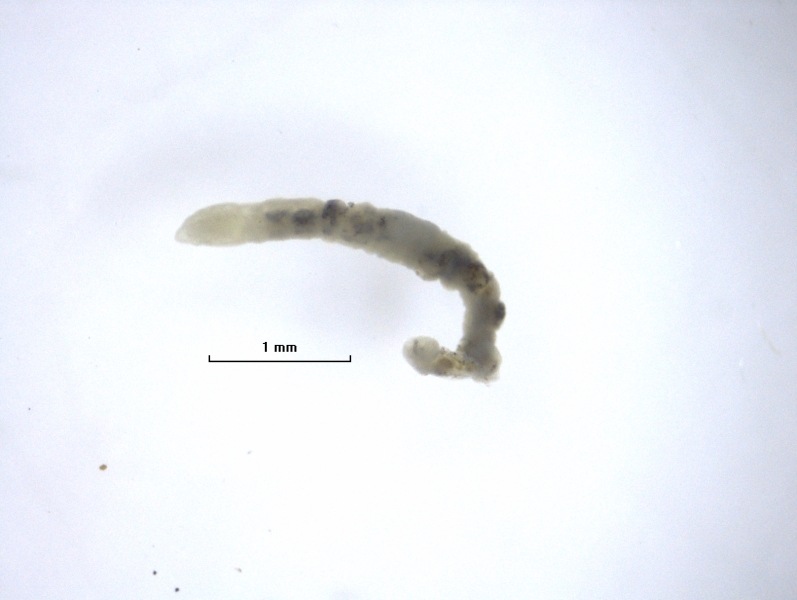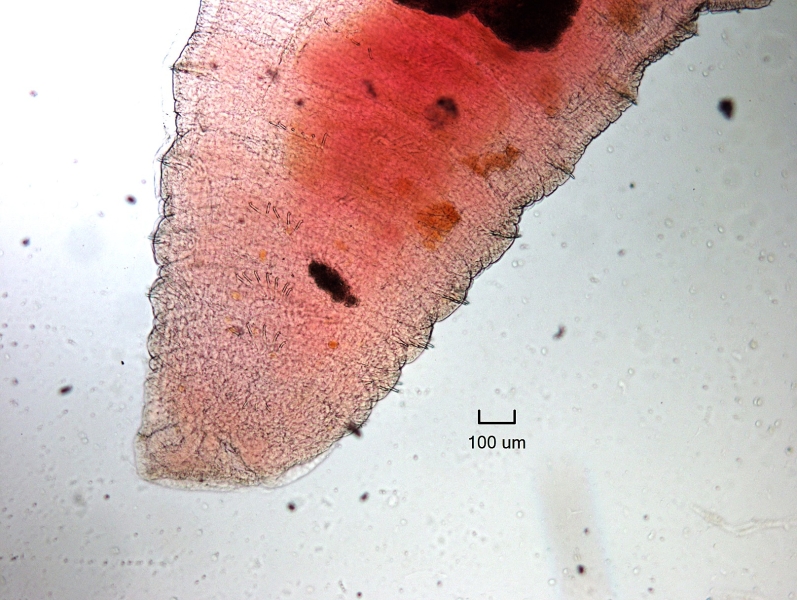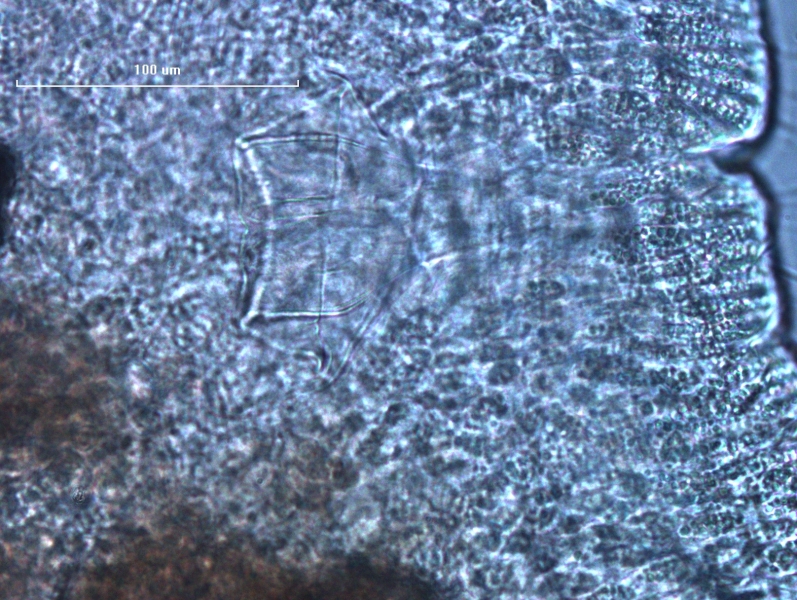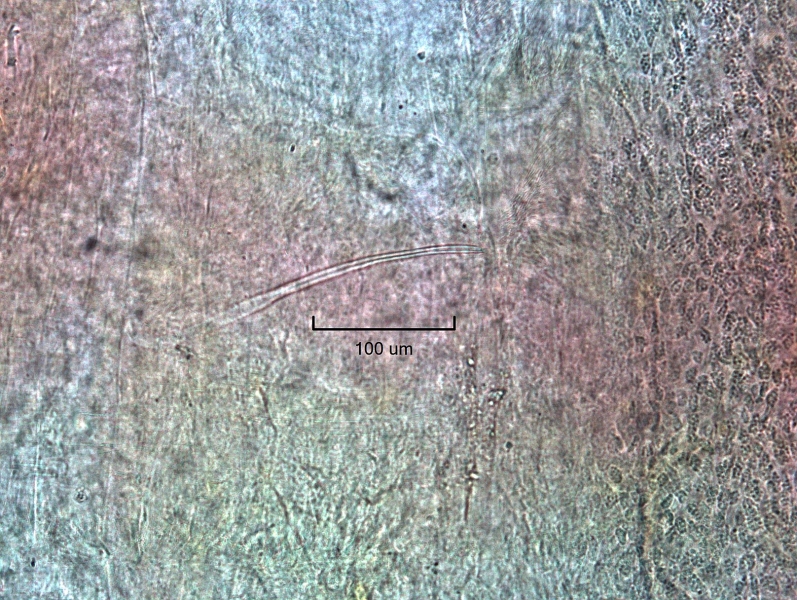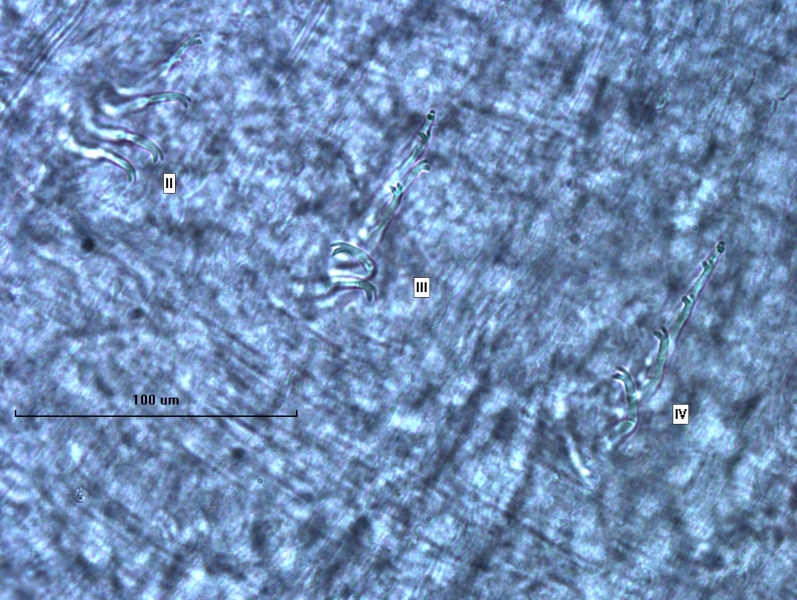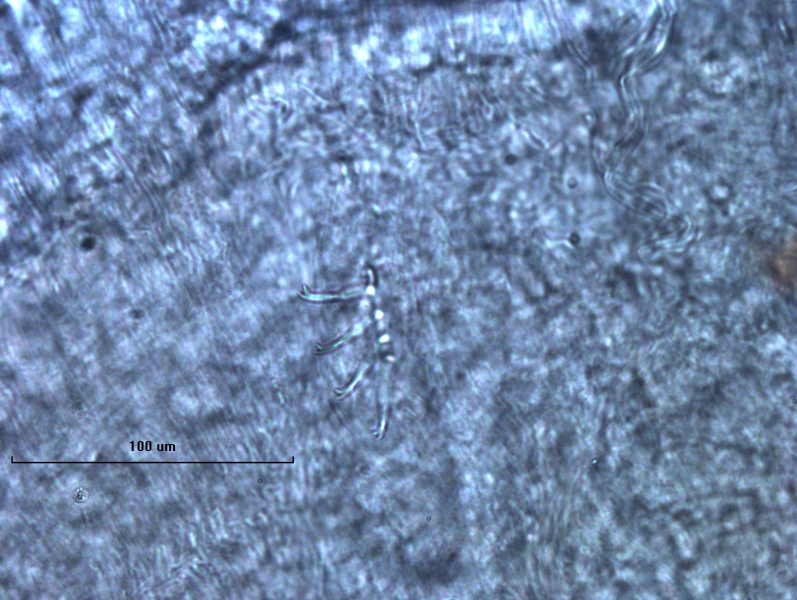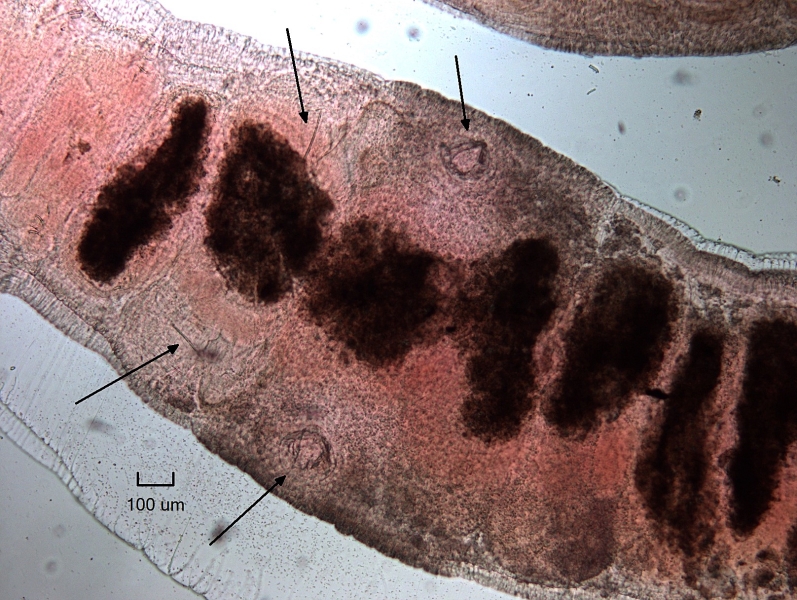Isochaetides freyi
Taxa description
Isochaetides freyi (Brinkhurst, 1965) is a freshwater oligochaete worm that is uncommon in the Great Lakes. It is a tubificid worm with bifid dorsal and ventral chaetae beginning in II. It has a short, broad cuticular penis sheath with a reflexed hood in XI, and a long, parallel-sided spermathecal chaetae on X. All chaetae are bifid, with the upper tooth the same length as the lower, but thinner. There are up to 8 chaetae per bundle anteriorly, with 2–3 posteriorly. I. freyi was once classified under Peloscolex.
Distinguishing features
I. freyi mainly identified by the cuticular penis sheaths and spermathecal chaetae, without which it will just appear as an immature tubificid worm without hairs. All of the chaetae are bifid with the upper tooth thinner than the lower but equally long.
Habitat
This species is usually found in mesotrophic habitats, and occasionally may be very abundant.
Lake occurrence
Lakes Erie and Ontario.
Similar species
Without the presence of reproductive features, many tubificid worm species can only be identified as “immature tubificid with or without hair.” Also keep in mind that the spermathecal chaetae or penis sheaths may be missing, so it is good to be familiar with finding one feature in the absence of the other. The spermathecal chaetae could be confused with Potamothrix moldaviensis. Both are worms without hair chaetae and have spermathecal chaetae on X, but the shape differs: the spermathecal chaetae of I. freyi are very long and thin, with a hollow tip; those of P. moldaviensis are long and hollow but wider and spear-shaped. P. moldaviensis also has everted penes instead of penis sheaths. The penis sheaths of I. freyi are reminiscent of Tubifex tubifex in their general shape, since they are both short cuticular penis sheaths that are about as long as they are broad, with a reflexed hood. T. tubifex has granular penis sheaths and often have a bulb or vase shape within the hood, while the penis sheaths of I. freyi are not granular and sometimes appear square instead of round due to creases that run from the apex to the base. It is quite easy to tell them apart because T. tubifex has hair chaetae in the dorsal bundles and lacks spermathecal chaetae, but it is a useful reference for the shape of the penis sheaths. The last species that I. freyi could be confused with is Isochaetides curvisetosus because they both have long, thin spermathecal chaetae and cuticular penis sheath since they belong to the same genus. However, I. curvisetosus has unique chaetal morphology, with some chaetae having upper teeth longer than the lower but many with the upper tooth shorter than the lower, and the posterior chaetae are solitary and strongly recurved with a very large lower tooth and minute upper tooth. I. curvisetosus is rare and usually found in streams or wetlands, not in the main basins of the Great Lakes.
Relative size
I. freyi is a relatively large freshwater oligochaete.
Does it have a barcode reference from the Great Lakes?
Yes, this species does have a barcode reference from the Great Lakes.
References
Kathman, R.D., and R.O. Brinkhurst. 1998. Guide to Freshwater Oligochaetes of North America. pp. 146–147, 130, 150–151, 142–143.
Stimpson, K.S., D.J. Klemm, and J.K. Hiltunen. 1982. A Guide to the Freshwater Tubificidae (Annelida: Clitellata: Oligochaeta) of North America. pp. 33, 46.


